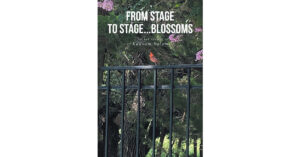TV & MOVIES
Jurassic Park Star Sam Neill Triumphs Over Stage 3 Blood Cancer and Returns to Work

Sam Neill, the iconic actor known for his roles in Jurassic Park and Peaky Blinders, recently revealed that he has been battling stage three blood cancer. However, in a testament to his resilience and determination, Neill is already back at work after receiving treatment and is set to star in the upcoming limited series, Apples Never Fall.
Neill’s diagnosis came in March 2022, while he was doing publicity for the latest installment of the Jurassic Park franchise, Jurassic World Dominion. The actor experienced swollen glands, which led to a diagnosis of angioimmunoblastic T-cell lymphoma. He underwent chemotherapy, but when that began to fail, he started on a new chemotherapy drug and is now cancer-free. Despite his success, he will still continue to receive the drug monthly for the rest of his life.
In his upcoming memoir, Did I Ever Tell You This?, Neill shares his journey with cancer and how he coped during his treatment. He reveals that he began writing as a way to keep busy and maintain a sense of purpose. “I never had any intention to write a book,” he says. “But as I went on and kept writing, I realized it was actually sort of giving me a reason to live.” Neill went to bed thinking about what he would write about the next day, finding comfort in the creative outlet that writing provided.
Despite the challenges he faced, Neill remained optimistic and grateful for his friends and family. “I can’t pretend that the last year hasn’t had its dark moments,” he says. “But those dark moments throw the light into sharp relief, you know, and have made me grateful for every day and immensely grateful for all my friends. Just pleased to be alive.”
Neill’s quick return to work is a testament to his determination and the resilience of the human spirit. He is set to star in the TV adaptation of Liane Moriarty’s bestselling novel, Apples Never Fall, alongside Annette Bening. According to representatives for the actor, he is “very well and back at work.”
Angioimmunoblastic T-cell lymphoma is a rare and aggressive form of non-Hodgkin’s lymphoma. It is characterized by enlarged lymph nodes, fever, and a variety of other symptoms. The exact cause of this type of lymphoma is unknown, but it is thought to be related to a dysfunction of the immune system.
Chemotherapy is a common treatment for lymphoma and involves the use of powerful drugs to kill cancer cells. However, chemotherapy can have serious side effects, including nausea, hair loss, and an increased risk of infection. Neill’s ability to overcome these challenges and maintain his positive attitude is a testament to his strength and resilience.
Sam Neill’s journey with cancer serves as a reminder of the resilience of the human spirit. Despite facing a life-threatening illness, he remained optimistic and focused on his recovery. His return to work after receiving treatment is a testament to his determination and the power of creative outlets to provide comfort and purpose during difficult times. We wish him continued health and success in all his future endeavors.
TV & MOVIES
The Rise of OTT as the New Box Office

The Rise of OTT as the New Box Office
Once viewed as an alternative platform for offbeat cinema, OTT streaming has now become the new box office. Services like Netflix, Amazon Prime Video, Disney+ Hotstar, and JioCinema have blurred the lines between traditional film releases and digital premieres. Films now transition from theatre to streaming in record time, capitalizing on binge-hungry audiences. For stars, producers, and even entertainment journalists, success metrics have changed — viewership minutes are replacing weekend grosses. The result: OTT sits at the center of India’s entertainment economy, steering ad spends, influencing production budgets, and shaping the stories greenlit each quarter.
Entertainment News in the Age of Instant Streaming
In the digital ecosystem, entertainment journalism has transformed from the red carpet to the real-time feed. Every Friday now brings not just a theatrical release but multiple digital premieres across languages. Reporters have pivoted from set visits to decoding content strategy and from star gossip to viewership data. The new buzzwords: streaming engagement, AI-driven recommendations, and cross-platform visibility. Newsrooms like LiveNewsVault Entertainment and partners at CarryOnHarry now run OTT review dashboards, instant alerts, and trend explainers as core products.
Regional Powerhouses Take the Lead
India’s OTT revolution is inherently multilingual. Regional industries — Tamil, Telugu, Malayalam, Bengali, and Marathi — are not secondary players but growth engines. Breakout series and films prove that strong storytelling transcends language; national audiences discover talent via dubs, subs, and algorithmic curation. As fame democratizes, coverage widens: interviews and reviews from Kochi to Kolkata now trend pan-India within hours.
From Red Carpets to Reels: Celebrity PR Gets a Digital Makeover
Public relations and celebrity branding have undergone a dramatic shift. Actors cultivate fan engagement through behind-the-scenes reels, live Q&As, and platform-native collaborations. Reporters have become hybrid creators — part journalist, part analyst. Innovative campaigns (password-gated “secret reels,” ARG-style teasers, fan-first premieres) show how marketing has evolved for the scroll era: faster, smarter, and multimedia-first.
The Future: Where Algorithms Meet Art
As AI-driven curation becomes integral to discovery, the future of entertainment news is personalization. Editors increasingly collaborate with analytics to predict which categories — crime thriller, social drama, or period biopic — will surge. Independent desks leverage similar tools to deliver hyper-personalized reviews, streaming alerts, and creator spotlights tailored to micro-audiences. The story no longer ends at the screen; it continues in how we cover the screen.
Conclusion: The Digital Stage Expands
OTT has reinvented both entertainment and journalism. What used to be a Friday column is now a seven-day newsroom linking creators, audiences, and platforms through one digital thread. The future of entertainment news is streaming-first, global-minded, and endlessly connected. The screens may be smaller — the stories are larger than ever.
TV & MOVIES
Bollywood’s British Leap: Cross‑Border Filming and the New Cinematic Frontier

Bollywood’s British Leap: Cross‑Border Filming and the New Cinematic Frontier
Behind this move lie incentives, economic strategy, and symbolic ambition. The question now: can Bollywood transplant its cinematic heart without losing its cultural soul?
The announcement came via the corridors of power: British Prime Minister Keir Starmer revealed during his India visit that three Bollywood productions will be made in Britain from early 2026.
Central to the pact is Yash Raj Films, which had paused major UK shoots for eight years, now returning as the anchor for this cross‑border experiment.
Expected to generate around 3,000 jobs, the deal is as much diplomatic optics as industrial infrastructure.For Bollywood observers, it is a litmus test: can Indian storytelling adapt to foreign soil without feeling foreign?
The Vanguard: Yash Raj Leads the Charge
Yash Raj Films (YRF), long a stalwart of big‑scale Hindi cinema, is the first name attached to this UK dream.With its track record of lavish musicals, romance, and action — from Dilwale Dulhania Le Jayenge to Pathaan — YRF carries both brand capital and creative weight.Their reentry into Britain marks more than nostalgia: it signals a strategic pivot toward outward expansion.
But leading this frontier is no easy role. They will need to balance spectacle and intimacy, and reconcile Indian aesthetics with British logistical realities.
Incentives, Co‑Productions & Tax Mechanics
The financial architecture is critical. As part of the agreement, Indian and UK bodies will pursue co‑production treaties, resource sharing accords, and reciprocal benefits.UK’s creative industries already contribute around £12 billion annually and support ~90,000 jobs — the British case is that international shoots strengthen local ecosystems.Rebates, studio partnerships (e.g. Pinewood, Elstree) and infrastructure support are expected to sweeten the deal.But the devil is in execution: permissions, union rules, import logistics, film quotas, and cross‑border revenue sharing could complicate creative freedom.
Opportunities (and Tensions) for UK Crews & Cultural Exchange
Locally, film professionals in the UK see a surge of opportunity: from lighting crews to VFX houses, from set construction to post‑production houses. The promise of roughly 3,000 new roles is a significant magnet.Yet the collaboration demands sensitivity: will Indian team leads integrate, or default to bringing crews from India? Will local talent be collaborators or footnotes?
There is also the cultural friction of narratives: Indian stories often depend on linguistic nuance, emotional idioms, and socio‑cultural reference. Translating such texture across geographies — e.g. a diasporic scene set in Leicester, or a heritage plot in rural India but shot in the Cotswolds — requires careful calibration.
Comparative Lens: UK, US, Middle East & Southeast Asia
Bollywood has already flirted with foreign stages: films set in New York, Dubai, London, Malaysia, and Bangkok. But these were episodic — song sequences or a few days’ location work.
What’s novel now is full production immersion: shooting entire blocks abroad, and using foreign studios as main hubs rather than occasional backdrops.The US has always been a lure, but bureaucratic cost, limited subsidy infrastructure, and union complexity have tempered enthusiasm. The Middle East (Dubai, Abu Dhabi) offers tax breaks and modern facilities, but lacks the anchor of diaspora and cultural familiarity. Southeast Asia has drawn Indian shoots for lower cost, but not the prestige of UK or US branding.The UK’s strength lies in infrastructure, cultural connectivity (Indian diaspora, shared colonial history), institutional film bodies, and scenic legacy. If it succeeds, we may witness a regional shift: Bollywood’s second “home” might well be London.
For now, the journey begins: the lens crosses the sea, and the world watches whether Bollywood’s soul can find new soil and still breathe.
-

 Editor's Choice3 months ago
Editor's Choice3 months agoRanveer Singh and Deepika Padukone Reunite for New Romantic Comedy
-

 Editor's Choice9 months ago
Editor's Choice9 months agoReview: Rekhachithram (2025) – A Masterful Blend of Mystery and Redemption
-

 Authors and Artists4 years ago
Authors and Artists4 years agoCreate Your Miraculous Life: It’s Never Too Late Wendy L. Darling
-

 People's Choice4 months ago
People's Choice4 months agoBollywood in August 2025: A Landscape of Sequels, Social Commentary, and Star Power





